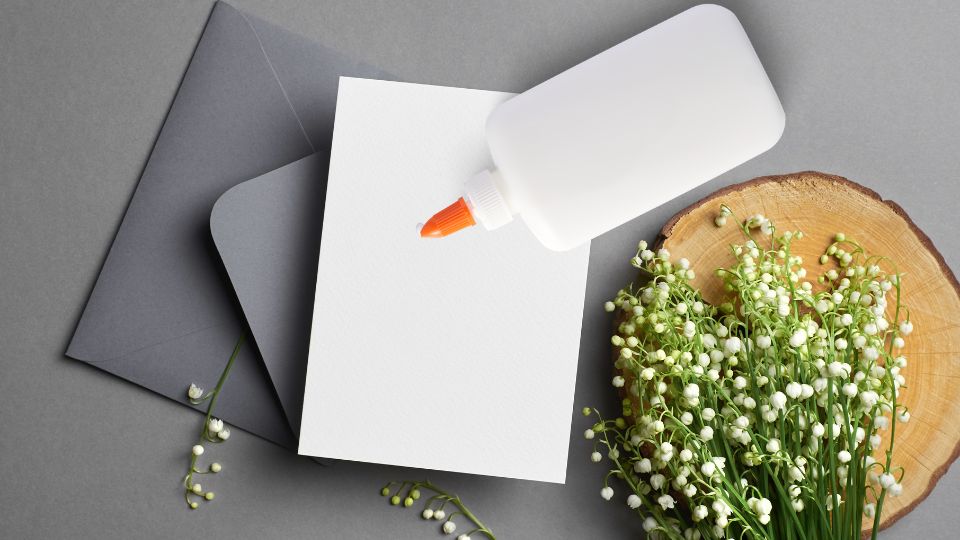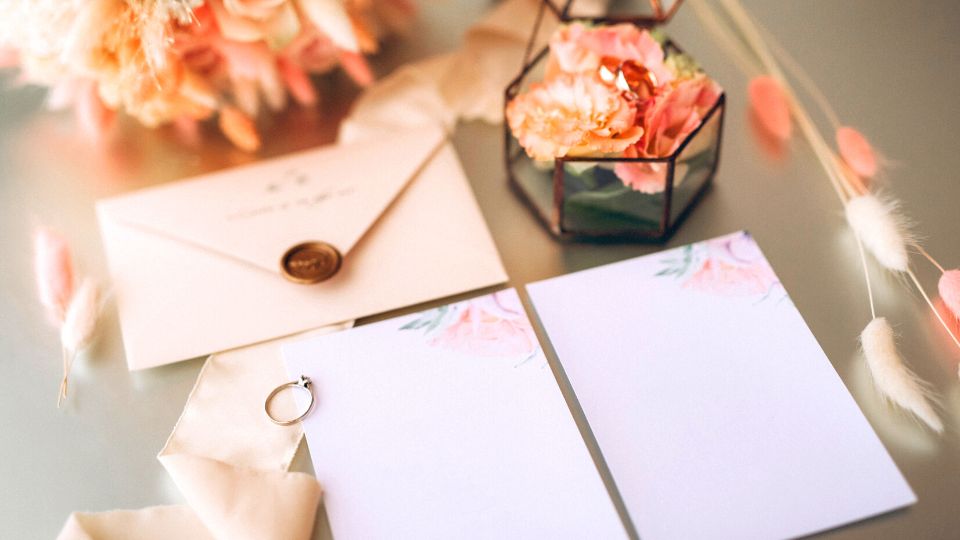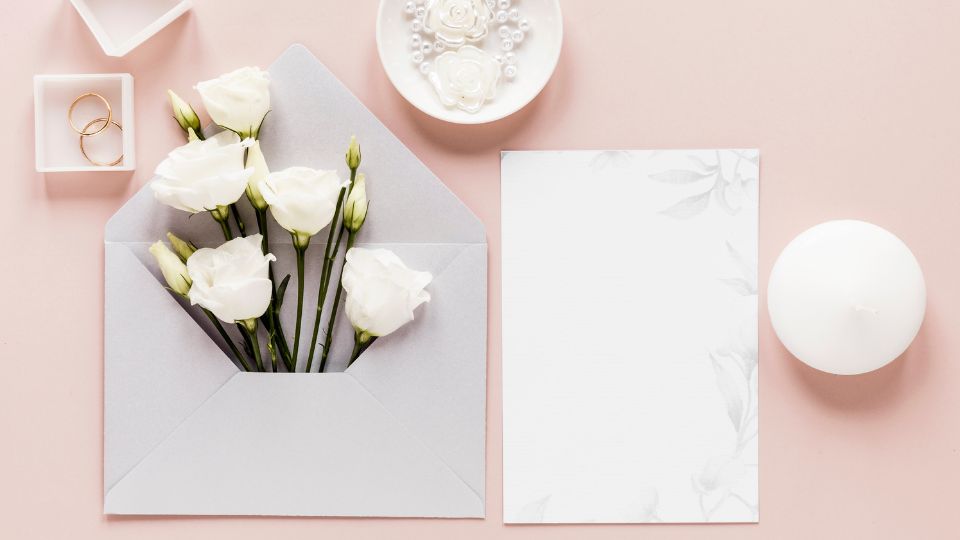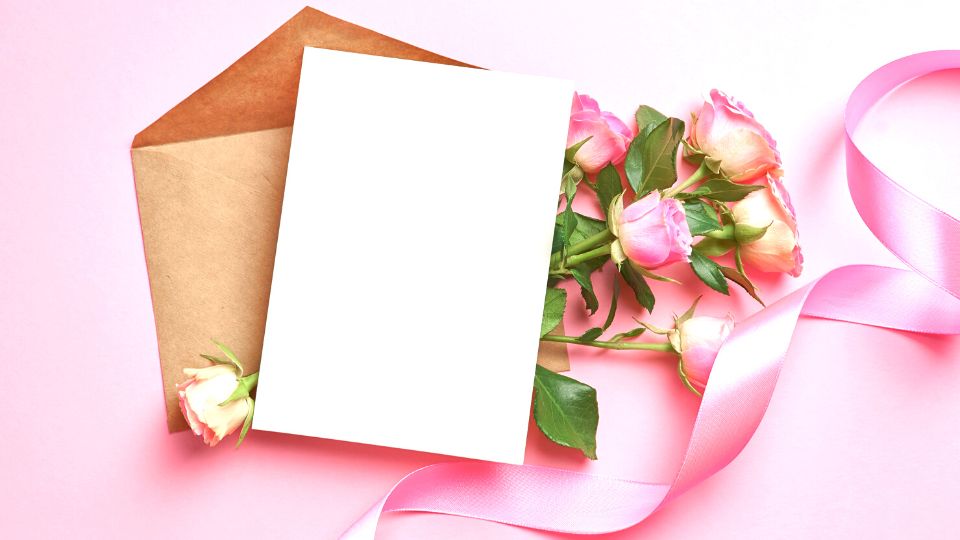If you’re preparing for your wedding, one of the most important tasks is assembling your wedding invitations. Choosing the right adhesive is crucial to ensure that your invitations stay together and look their best.
There are various types of glue and alternative options to consider when it comes to gluing wedding invitations, and it can be overwhelming to choose the best one.
In this article, we’ll guide you through the best way to glue wedding invitations, including step-by-step instructions, tips for applying glue evenly, and alternative options to gluing.
How do you glue invitations together?
When it comes to assembling wedding invitations, choosing the right adhesive is crucial to ensuring that your invitations stay together and look their best. Here are some steps to follow when gluing invitations together:
- Gather your supplies: You will need your invitations, envelopes, and adhesive of choice.
- Apply the adhesive: Using a small brush or applicator, apply a thin layer of adhesive to the back of the invitation. Be sure to apply the adhesive evenly, avoiding clumps or smudges.
- Attach the invitation: Carefully place the invitation onto the envelope, making sure it is aligned properly. Press down firmly to ensure a secure bond.
- Repeat: Repeat the process for each invitation, being careful to apply the same amount of adhesive to each one.
Tips for Gluing Invitations Together
- Test the adhesive on a sample piece of paper before using it on your actual invitations.
- Use a small brush or applicator to apply the adhesive, as this will help you to apply it more evenly.
- Allow the adhesive to dry completely before mailing the invitations.
Can Beeswax be Used as an Adhesive?
While beeswax is often used in crafting and DIY projects, it is not typically recommended as an adhesive for wedding invitations. Beeswax is a natural product that can be used to create a seal, but it is not a strong enough adhesive to keep invitations securely in place.
Additionally, beeswax can be difficult to work with and may leave a residue on the paper. For best results, it is recommended to use a strong adhesive specifically designed for paper crafting and invitations.
Types of Glue
When it comes to gluing wedding invitations together, there are various types of glue to choose from. Here are some of the most common types of glue for wedding invitations:
Liquid Glue
Liquid glue is a popular choice for wedding invitations, as it provides a strong bond and is easy to use. Liquid glue typically comes in a bottle with a small brush or applicator for precise application. It’s important to choose a clear-drying liquid glue to avoid any visible residue on the paper.
Glue Tape
Glue tape is a double-sided tape that is easy to use and mess-free. It is ideal for attaching small embellishments to invitations or for attaching multiple layers of paper together. Glue tape comes in a dispenser that makes it easy to apply in straight lines.
Glue Dots
Glue dots are small adhesive dots that are easy to use and provide a strong bond. They are ideal for attaching small embellishments to invitations or for creating a 3D effect on your invitations. Glue dots come in a dispenser that makes it easy to apply them precisely where you need them.
Glue Sticks
Glue sticks are a popular choice for wedding invitations, as they are mess-free and easy to use. They provide a strong bond and dry quickly, making them ideal for assembling large batches of invitations. Glue sticks come in a twist-up tube that makes them easy to apply.
Wax Seals
Wax seals are a classic and elegant way to seal wedding invitations. They can be used in place of glue to seal envelopes or to attach embellishments to invitations. Wax seals come in a variety of colors and designs, making them a versatile choice for adding a personal touch to your invitations.
Choosing the Right Glue
Choosing the right glue for your wedding invitations is crucial to ensuring that they stay securely assembled and look their best. Here are some factors to consider when choosing glue for your wedding invitations:
- Type of paper: The type of paper you are using for your wedding invitations will affect the type of glue you should use. For thicker, textured, or handmade papers, a liquid glue or glue dots may be a better choice, while for thinner or smoother papers, a glue tape or glue stick may work well.
- Type of embellishments: If you are attaching embellishments to your wedding invitations, such as ribbons or crystals, you will need a glue that can hold them securely in place. A liquid glue or glue dots may work well for attaching heavier embellishments, while a glue tape or glue stick may work well for lighter embellishments.
- Acid-free and photo-safe: It’s important to choose a glue that is acid-free and photo-safe, to avoid any damage to your invitations over time.
Recommended Types of Glue for Different Types of Paper
Here are some recommended types of glue for different types of paper:
- For thick or textured paper: Liquid glue or glue dots.
- For smooth or thin paper: Glue tape or glue stick.
- For embellishments: Liquid glue or glue dots for heavier embellishments, and glue tape or glue stick for lighter embellishments.
Tips for Testing Glue before Using it on Your Wedding Invitations
Before using any glue on your wedding invitations, it’s a good idea to test it on a sample piece of paper first. This will help you to see how the glue dries and how it looks on your paper. Here are some tips for testing glue:
- Use a sample piece of the same paper you will be using for your invitations.
- Apply the glue to the sample paper and allow it to dry completely.
- Check for any visible residue or discoloration on the paper.
- Test the strength of the bond by trying to peel the paper apart.
How to Glue Wedding Invitations
Assembling wedding invitations requires careful attention to detail to ensure that they are securely and beautifully assembled. Here are some step-by-step instructions for gluing wedding invitations:
- Prepare your work surface: Start by laying out all of your materials on a clean, flat work surface. Make sure you have plenty of space to work and that your work area is clean and free of dust or debris.
- Apply the glue: Using a small brush or applicator, apply a thin layer of adhesive to the back of the invitation. Be sure to apply the adhesive evenly, avoiding clumps or smudges.
- Attach the invitation: Carefully place the invitation onto the envelope, making sure it is aligned properly. Press down firmly to ensure a secure bond.
- Repeat: Repeat the process for each invitation, being careful to apply the same amount of adhesive to each one.
Tips for applying glue evenly and avoiding smudging or wrinkling
Here are some tips for applying glue evenly and avoiding smudging or wrinkling:
- Use a small brush or applicator to apply the adhesive, as this will help you to apply it more evenly.
- Avoid using too much adhesive, as this can cause smudging and wrinkling.
- Work in a well-ventilated area to ensure that the adhesive dries properly.
- Allow the adhesive to dry completely before mailing the invitations.
Best practices for assembling your wedding invitations
Here are some best practices for assembling your wedding invitations:
- Double-check the wording and details on each invitation before gluing them together.
- Assemble one invitation at a time to ensure that each one is done correctly.
- Use a ruler or guide to ensure that each invitation is aligned properly.
- If using embellishments, attach them after gluing the invitations together to avoid any smudging or wrinkling.
Alternative Options to Gluing Wedding Invitations
While glue is a popular and traditional way to assemble wedding invitations, there are also alternative options to consider.
Ribbon or Twine
Using ribbon or twine to tie your wedding invitations together is a beautiful and elegant alternative to glue. You can choose a ribbon or twine that matches your wedding colors or theme, and tie it in a bow or knot for a finished look.
Wax Seals
Wax seals are a classic and elegant way to seal wedding invitations. You can use them in place of glue to seal envelopes or to attach embellishments to invitations. Wax seals come in a variety of colors and designs, making them a versatile choice for adding a personal touch to your invitations.
Belly Bands
Belly bands are a popular choice for securing wedding invitations together. They are essentially a strip of paper or ribbon that wraps around the invitation suite and holds everything in place. Belly bands can be personalized with your wedding details or monogram, and are available in a variety of colors and styles.
Conclusion
Assembling wedding invitations can be a daunting task, but with the right materials and techniques you can create beautiful and secure invites. Glue is a popular choice for assembling invitations, but there are other options such as ribbon or twine, wax seals, and belly bands that can add elegance and personalization to your wedding stationery.
Whatever option you choose, taking time to prepare your work surface and adhere the invitations properly will help ensure that your guests receive gorgeous wedding invites in perfect condition.





